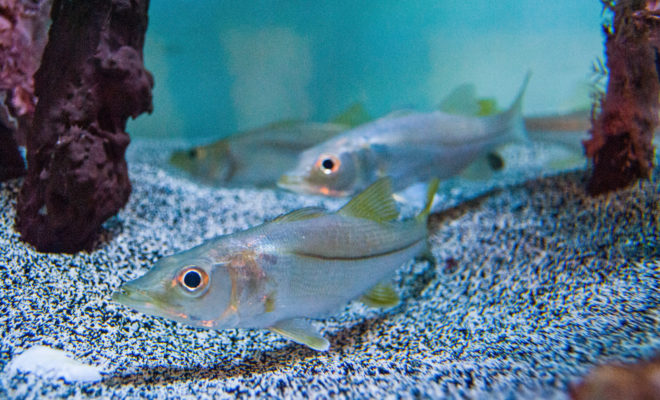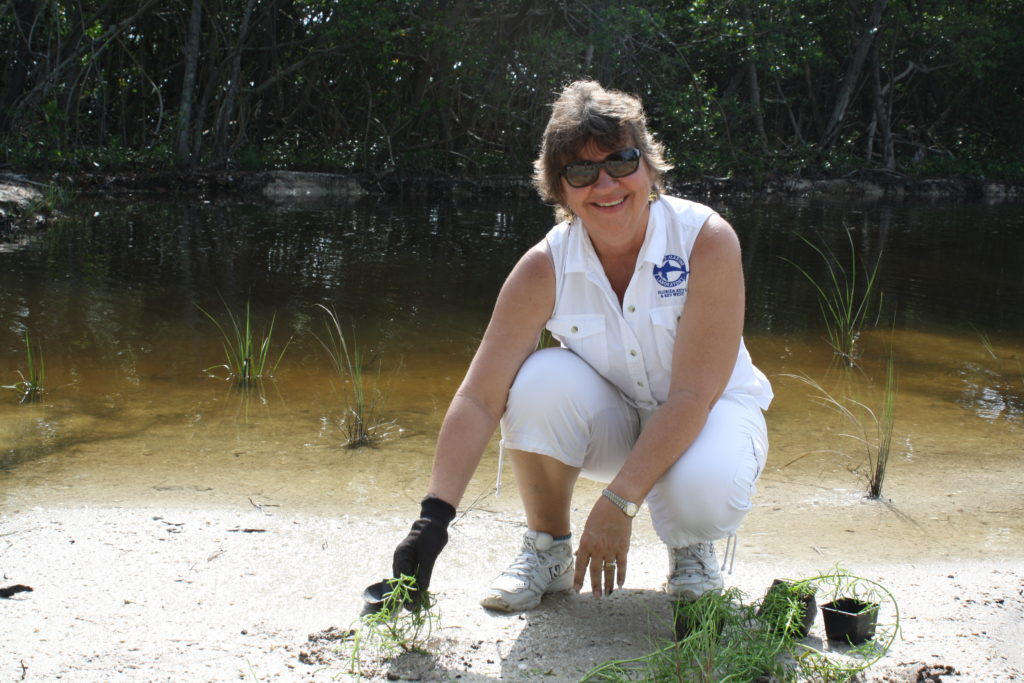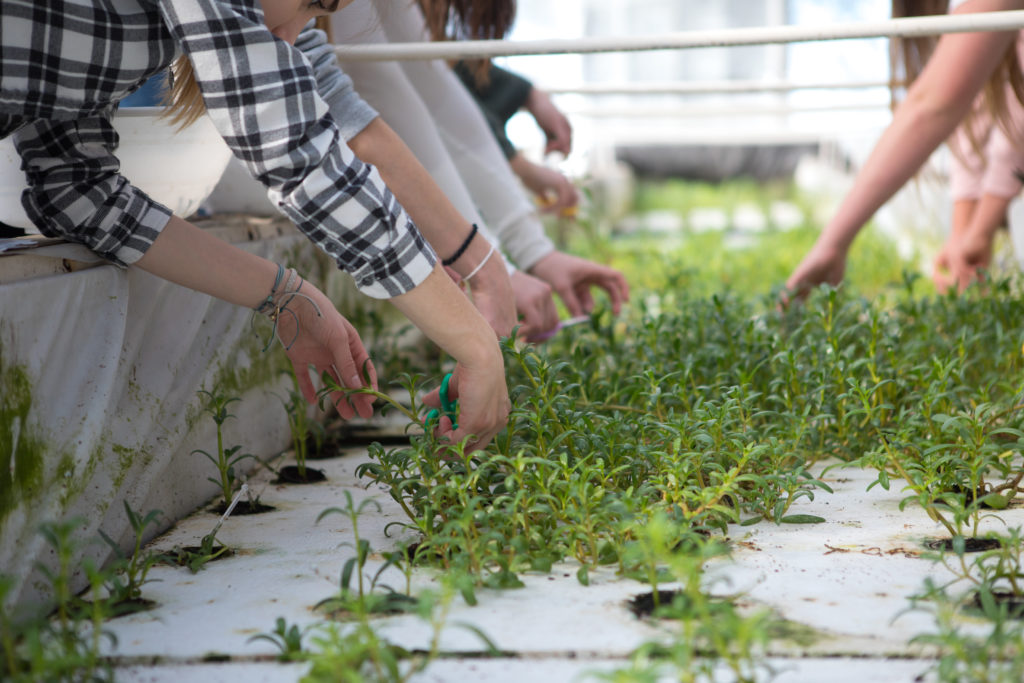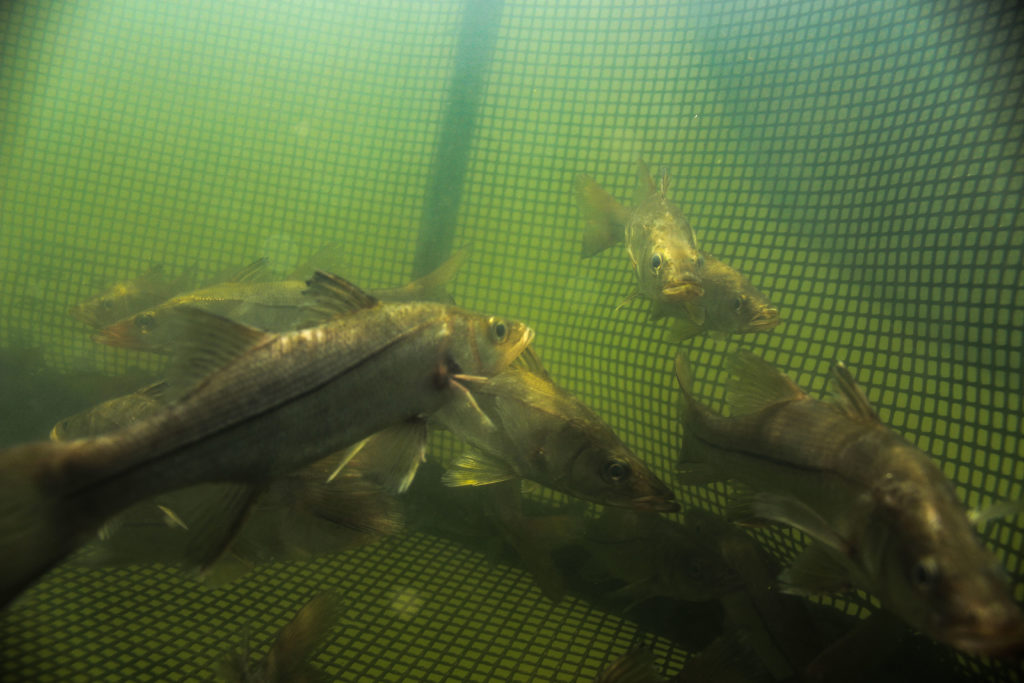
Feature
Aquaculture Research at Mote Marine Laboratory
By Ryan G. Van Cleave
If you’re like me, you probably can sleuth out that “aquaculture” is the farming of animals and plants in water environments, such as ponds, lakes, rivers, and the ocean. But I wasn’t prepared for when Dr. Kevan Main—one of Mote’s prominent female scientists and a noted researcher in this area—told me that aquaculture is going to be “the most significant way to produce food as we move into the future.” That surprised me, since farming fish for food is a young industry in the U.S., having been around for only about 50 years. But globally, aquaculture is a much older tradition that now supplies more than 50% of all seafood produced for human consumption, and that percentage is growing each year.
 The reasons why this is the case, she says, are clear. We simply have limitations on freshwater and resources for land-based agriculture. “As the world’s population continues to grow, it’s clear to me that future increases in protein production will come from the sea.” So it’s not all that strange that this is one of the things they’re focused on at Mote. “For the last 8 years, we’ve had a strong focus on the development of an integrated aquaculture system where we produce fish and plants in the same aquatic production system.” That type of system makes sense since the fish and plants living together help create a safe, sustainable, and economically viable situation.
The reasons why this is the case, she says, are clear. We simply have limitations on freshwater and resources for land-based agriculture. “As the world’s population continues to grow, it’s clear to me that future increases in protein production will come from the sea.” So it’s not all that strange that this is one of the things they’re focused on at Mote. “For the last 8 years, we’ve had a strong focus on the development of an integrated aquaculture system where we produce fish and plants in the same aquatic production system.” That type of system makes sense since the fish and plants living together help create a safe, sustainable, and economically viable situation.
“I’ve been doing that [creating integrated fish and plant systems] with marine species,” Dr. Main notes. “We work with red drum, and the plant crop is an edible sea purslane.” Sea purslane is a relative of spinach, though it doesn’t taste like spinach. It’s got a decidedly plump, fleshy texture to it, and it has a unique flavor that’s a bit salty, so you don’t need to add salt to your food. Dr. Main points out that this leafy vegetable works well with many types of meals. Add it to a salad as part of your lettuce mix. Sauté it and substitute it for spinach in a pasta dish. Or bake it into a quiche. The sea purslane grown by Mote is already sold at farmer’s markets in Sarasota and by direct sales to vendors, so try it for yourself and see what you think.

But Dr. Main and the other scientists at Mote are working on other things too, including finding ways to restore declining fish populations. Snook, in particular, are a species that’s on the rise thanks to their efforts.
“We’re also working on developing the fish culture technology to support future seafood production in deep-water cages in the Gulf of Mexico. The fish that will be farmed in this cage project is almaco jack, which is an amberjack relative,” she says. Though it’s smaller in size than amberjack, it inhabits the same type of locations. Most know it by the Japanese name—Kampachi. And it’s been made famous from farms in Hawaii that brand it as Kona Kampachi, as well as from farms in Mexico that call it Baja Kampachi. “What’s great about it is that this fish is found in subtropical areas all over the world. Yet we’re the only research group working on almaco jack in the Gulf.”
While almaco jack is clearly part of the fish production future in our area, Dr. Main points out that another great fish for farming in Florida is the Florida pompano—her favorite fish to eat. “For years, we worked on aquaculture technology for pompano and we are currently working on research to support a farm on the east coast of Florida.” They’re in the final stages of construction of new facilities, and they hope by early 2020, farm-raised pompano will be available throughout Florida.
Here’s another fact Dr. Main shared, and it’s a shocking one. Over 91% of the seafood we eat here in Florida—which, as we know, is a state essentially surrounded by water!—is imported. “We have such a wonderful suite of candidate species that could be grown locally to meet our local demand for seafood. But you go to a restaurant and most of what is on the menu is not farmed or wild-caught from the Gulf of Mexico. For the most part, the salmon, shrimp, tilapia, and other seafood you eat comes from elsewhere.”

For the U.S. in general—and Florida in specific—the idea of producing fish just hasn’t caught on. “People need to understand how important this is,” Dr. Main says. “The seafood trade deficit associated with imports make it second in line right behind oil.”
Several things are delaying progress in moving forward with a more robust plan for aquaculture. The U.S. is environmentally conservative, so it is very challenging to initiate a new kind of agriculture farming, such as aquaculture. Dr. Main adds that “There’s a lot of misinformation out there about the impacts associated with aquaculture.” The entire aquaculture industry has improved thanks to the efforts of organizations like the Mote Marine Laboratory, the World Aquaculture Society, and scientists like Dr. Main. But the technology to handle aquaculture the right way will only come from a serious investment in the continued development of sustainable aquaculture technologies.
“We can produce the highest quality, safest seafood in the U.S.,” Dr. Main believes, “and we really need to start doing that today. We can’t afford NOT to allow local farmers to meet local demands for seafood. Sarasota has a strong support base for local foods for local markets. Yet we can do more.”
With the help of Mote and Dr. Main, perhaps Florida will soon be doing more. A lot more.
For more information on Mote Marine Laboratory, please visit www.Mote.org or call 941.388.4441.



You must be logged in to post a comment Login